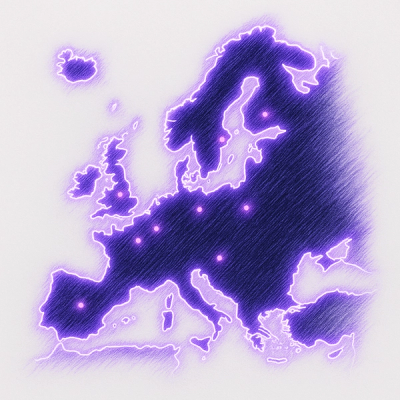Roboflow Inference JS
An edge library for deploying computer vision applications built with Roboflow to JS environments.
Installation
This library is designed to be used within the browser, using a bundler such as vite, webpack, parcel, etc. Assuming your bundler is set up, you can install by executing:
npm install inferencejs
Getting Started
Begin by initializing the InferenceEngine. This will start a background worker which is able to download and
execute models without blocking the user interface.
import { InferenceEngine } from "inferencejs";
const PUBLISHABLE_KEY = "rf_a6cd...";
const inferEngine = new InferenceEngine();
const workerId = await inferEngine.startWorker("[PROJECT URL SLUG]", [VERSION NUMBER], PUBLISHABLE_KEY);
const result = await inferEngine.infer(workerId, img);
API
InferenceEngine
new InferenceEngine()
Creates a new InferenceEngine instance.
startWorker(modelName: string, modelVersion: number, publishableKey: string): Promise<number>
Starts a new worker for the given model and returns the workerId. Important- publishableKey is required and can be obtained from Roboflow in your project settings folder.
infer(workerId: number, img: CVImage | ImageBitmap): Promise<Inference>
Infer on n image using the worker with the given workerId. img can be created using new CVImage(HTMLImageElement | HTMLVideoElement | ImageBitmap | TFJS.Tensor) or createImageBitmap
stopWorker(workerId: number): Promise<void>
Stops the worker with the given workerId.
YOLOv8 YOLOv5
The result of making an inference using the InferenceEngine on a YOLOv8 or YOLOv5 object detection model is an array of the following type:
type RFObjectDetectionPrediction = {
class?: string;
confidence?: number;
bbox?: {
x: number;
y: number;
width: number;
height: number;
};
color?: string;
};
GazeDetections
The result of making an inference using the InferenceEngine on a Gaze model. An array with the following type:
type GazeDetections = {
leftEye: { x: number; y: number };
rightEye: { x: number; y: number };
yaw: number;
pitch: number;
}[];
leftEye.x
The x position of the left eye as a floating point number between 0 and 1, measured in percentage of the input image width.
leftEye.y
The y position of the left eye as a floating point number between 0 and 1, measured in percentage of the input image height.
rightEye.x
The x position of the right eye as a floating point number between 0 and 1, measured in percentage of the input image width.
rightEye.y
The y position of the right eye as a floating point number between 0 and 1, measured in percentage of the input image height.
yaw
The yaw of the visual gaze, measured in radians.
pitch
The pitch of the visual gaze, measured in radians.
CVImage
A class representing an image that can be used for computer vision tasks. It provides various methods to manipulate and convert the image.
Constructor
The CVImage(image) class constructor initializes a new instance of the class. It accepts one image of one of the following types:
ImageBitmap: An optional ImageBitmap representation of the image.HTMLImageElement: An optional HTMLImageElement representation of the image.tf.Tensor: An optional tf.Tensor representation of the image.tf.Tensor4D: An optional 4D tf.Tensor representation of the image.
Methods
bitmap()
Returns a promise that resolves to an ImageBitmap representation of the image. If the image is already a bitmap, it returns the cached bitmap.
tensor()
Returns a tf.Tensor representation of the image. If the image is already a tensor, it returns the cached tensor.
tensor4D()
Returns a promise that resolves to a 4D tf.Tensor representation of the image. If the image is already a 4D tensor, it returns the cached 4D tensor.
array()
Returns a promise that resolves to a JavaScript array representation of the image. If the image is already a tensor, it converts the tensor to an array.
dims()
Returns an array containing the dimensions of the image. If the image is a bitmap, it returns [width, height]. If the image is a tensor, it returns the shape of the tensor. If the image is an HTML image element, it returns [width, height].
dispose()
Disposes of the tensor representations of the image to free up memory.
static fromArray(array: tf.TensorLike)
Creates a new CVImage instance from a given tensor-like array.
Example
A fully functional example can be found in demo/demo.ts
Developing
To start the local development server, execute npm run dev to run the demo in development mode, with hot reloading.
To run library tests execute npm run test. To run the index.html file in dev mode with vite packaging run npm run dev.



